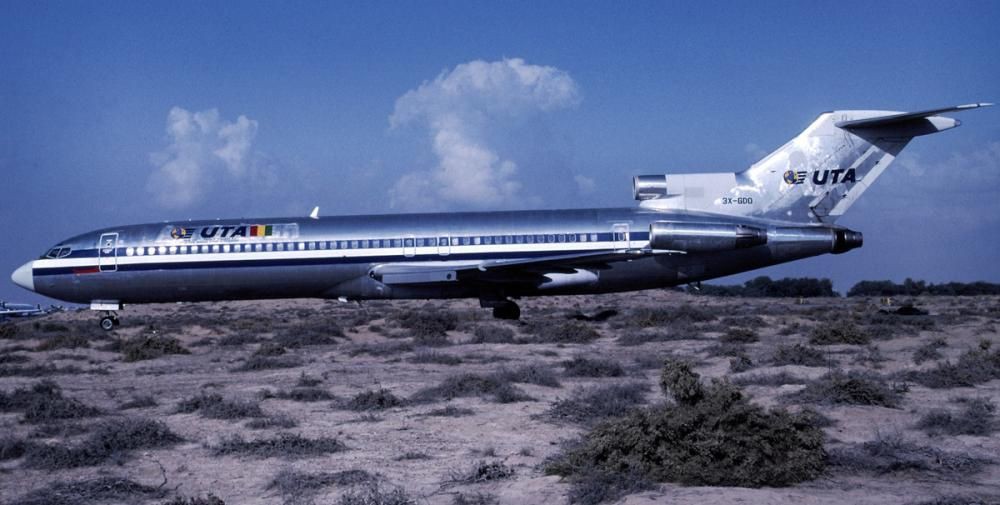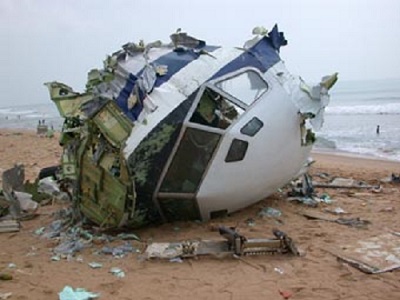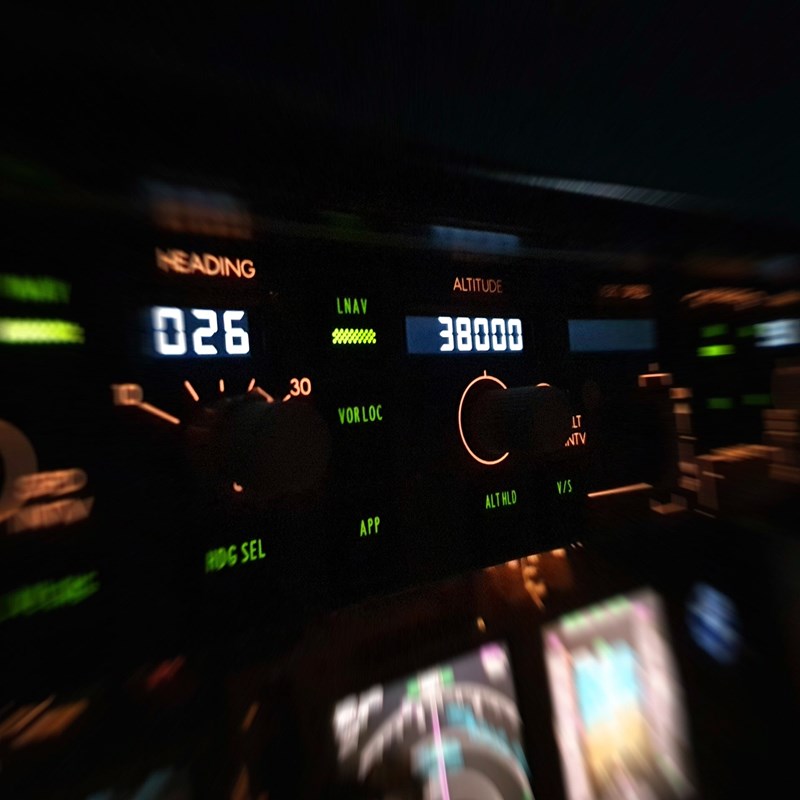25 December 2003 - UTAGE 141
On 25 December 2003, arriving from Conakry (Guinea), the Boeing 727-223 registered 3X-GDO undertaking flight GIH 141 to Kufra (Libya) and Beirut (Lebanon) and Dubai (United Arab Emirates) stopped over at Cotonou. During takeoff the airplane, overloaded in an anarchic manner, was not able to climb at the usual rate and struck an airport building located a hundred and eighteen meters past the runway end on the extended runway centerline, crashed onto the beach and ended up in the ocean.

Conclusions:
Personnel:
- Both pilots possessed Air Transport Pilot Licenses (ATPL) issued by Libya, not validated by Guinea.
- Both pilots possessed Commercial Pilot licenses (CPL) issued by the United Kingdom and validated by Guinea.
- The Flight Engineer possessed a license issued by Libya and validated by Guinea.
- The flight crew had been recruited by the owner of the airplane; they were paid by the operator.
- The flight crew exceeded, on each rotation, the flying time limits recommended by the State of Operator.
- The cabin crew possessed valid licenses. They did not have a written contract with the operator.
- The cabin crew exceeded, on each rotation, the flying time limits and the flight service periods defined by the operator.
- The controller on duty in the Cotonou tower possessed the necessary qualifications. A controller who was being trained assisted him.
- The operator had only one crew to operate the B727.
- All of the flights took place with the participation of two on-board mechanics and a security escort.
Operations:
- The airplane had replaced another Boeing 727, registered 3X-GDM, which had been forced to leave empty, on a ferry flight, after a technical inspection carried out at the time of its first flight to Beirut.
- The airplane was leased. Its owner had purchased it in January 2003. At that time it was in storage in the Mojave Desert in the USA.
- After the purchase, the airplane underwent some work, in particular engine changes, about which no information has been obtained.
- No maintenance documents subsequent to the purchase of the aircraft, including for the period of operation by UTA, could be provided.
- The airplane was operated successively by three operators under the remit of Afghanistan, Swaziland and Guinea respectively.
- The airplane was registered successively in Afghanistan, Swaziland and Guinea. Each of these countries issued a Certificate of Airworthiness for it with no restrictions on its validity. Each of the three successive Certificates of Registration mentioned the operator as the owner of the aircraft.
- During stopovers in Lebanon, the airplane was subject to technical inspections that brought to light failures to comply with regulations relating to documentation and equipment. At the time of those findings, the airplane was registered in Swaziland. The points raised were corrected before the airplane was registered by Guinea.
- The Guinean DNAC applied the technical procedures defined by ICAO, though it had neither regulations for detailed application nor the means to inspect the application thereof.
- According to the lease, maintenance of the airplane was the responsibility of the owner and the updating of its maintenance documents was up to the operator.
- The operator had neither the material infrastructure nor the skills required to operate a large transport airplane.
- The revised Operations Manual had been approved by the Guinean civil aviation authority several months after the beginning of operations.
- The Operations Manual was incomplete, contained numerous inconsistencies and was unsuitable for the needs of operations with the Boeing 727.
- The Operations Manual did not have a chapter on the loading and balance of the airplane.
- The corrected basic weight and the corrected dry operating index were not included in the available documentation. The operator was not able to provide them to the investigators.
- The crew did not have the appropriate documents to prepare the flight. The document used to establish the center of gravity, drawn up by the previous operator, showed limits that exceeded the airplane's performance capacities.
- The Operations Manual did not define the limitations on flying time and work periods for the flight crew.
- The service companies at Conakry and Cotonou had no written contracts with the operator that defined the services to be provided.
- Seats were not attributed during check-in and the boarding cards were not nominative.
The flight:
- 3X-GDO was supposed to carry out the flight from Cotonou to Beirut, with a stopover at Kufra. It was the second stop on the scheduled weekly flight GIH 141 from Conakry to Dubai.
- On 25 December 2003, the meteorological conditions were compatible with the operation of the planned flight.
- The co-pilot was Pilot Flying.
- Passenger boarding and airplane loading were performed without any overall supervision and with a complete lack of rigor.
- The airplane was full and there was a large quantity of large hand baggage. The forward hold was full.
- No overall document relating to boarding and loading (passengers, baggage) could be supplied. There were seven different manifests, all badly completed.
- Calculations showed that an undeclared load of around three tons was probably on board during the flight from Conakry to Cotonou.
- The flight crew knew that the airplane was heavily loaded. They did not know the distribution of the load in the airplane's holds.
- On the basis of these indications and of their experience, the flight crew decided on a configuration and a take-off technique.
- They decided on a take-off weight of seventy-eight tons, which was compatible with the runway limitation, and a center of gravity of 19% that corresponded to a correctly distributed load.
- In fact, the airplane weight was about eighty-five and a half tons and the center of gravity 14%, that is to say much further forward.
- Forty-five seconds after brake release, the Captain ordered the rotation, which the co-pilot immediately carried out.
- The real rotation only occurred two seconds later, when the co-pilot increased his control column input. Five seconds later, the wheels left the ground.
- Fifty-six seconds after brake release, the airplane struck a building made of reinforced concrete, two meters forty-five high, located one hundred and eighteen meters from the end of the runway.
- The recorded number of victims and survivors exceeds the number of people who were presumed to be on board, whether according to the manifests or based on the number of seats available.

Download the full BEA accident report
---------------------------------------------------------------------------
There was a lot of noise during flight preparation. Most of the discussions were
about the loading of the airplane and these exchanges were between the flight
crew and various UTA representatives.
At 13 h 49 min 32 s, flight GIH 141 was cleared to start up.
At 13 h 52 min 12 s, it was cleared to taxi.
At 13 h 53 min 34 s, the Captain said « Make it one three seven, one four seven ».
There was a discussion on the number of people on board then the Captain asked for silence for the pre-flight check-list.
At 13 h 56 min 28 s, the co-pilot stated the take-off conditions: Under the brakes … maximum power; I will climb maximum three degrees nose up until I build up my speed.
At 13 h 57 min 40 s, flight GIH 141 was cleared for take-off.
At 13 h 58 min 01 s, take-off thrust was called for and applied with the brakes on.
The brakes were released at 13 h 58 min 15 s.
At 13 h 58 min 24 s, the Captain called for a "push"; this instruction was followed by a forward control column movement.
At 13 h 58 min 40 s, the Captain called out the speed of 80 kts, the calculations then show a roll distance of about 480 m since brake release.
At 13 h 59 min 00 s, the Captain called out « V1, VR ». The roll distance was about 1,620 m and the speed 137 kt. Simultaneously, the co-pilot made an elevator input (6) which passed from – 5.6° to + 10° in two seconds. The airplane’s angle of attack remained constant and the speed continued to increase.
At 13 h 59 min 02 s, the speed was 140 kts, the roll distance calculated from brake release was about 1,780 m. A background noise appeared that only stopped after the impact with the localizer building. The Captain called out « Rotate, rotate » and the co-pilot pulled back harder. The value of the angle of attack began to vary from – 1.2° to a maximum of 9° at an angular speed of about one degree a second.
At 13 h 59 min 04 s, the elevator angle reached + 16°, the angle of attack 0.5° and the speed was then 145 kt.
Lift off occurred at about 13 h 59 min 07 s, when the roll distance was about 2,100 m and the speed 148 kt.
At 13 h 59 min 09 s, the Captain said, urgently, « Pull, pull, pull … ».
At 13 h 59 min 11 s, as the speed of the airplane reached 155 kts, the sound of the first impact is heard. A sudden decrease in longitudinal acceleration and angle of attack correspond to this.

